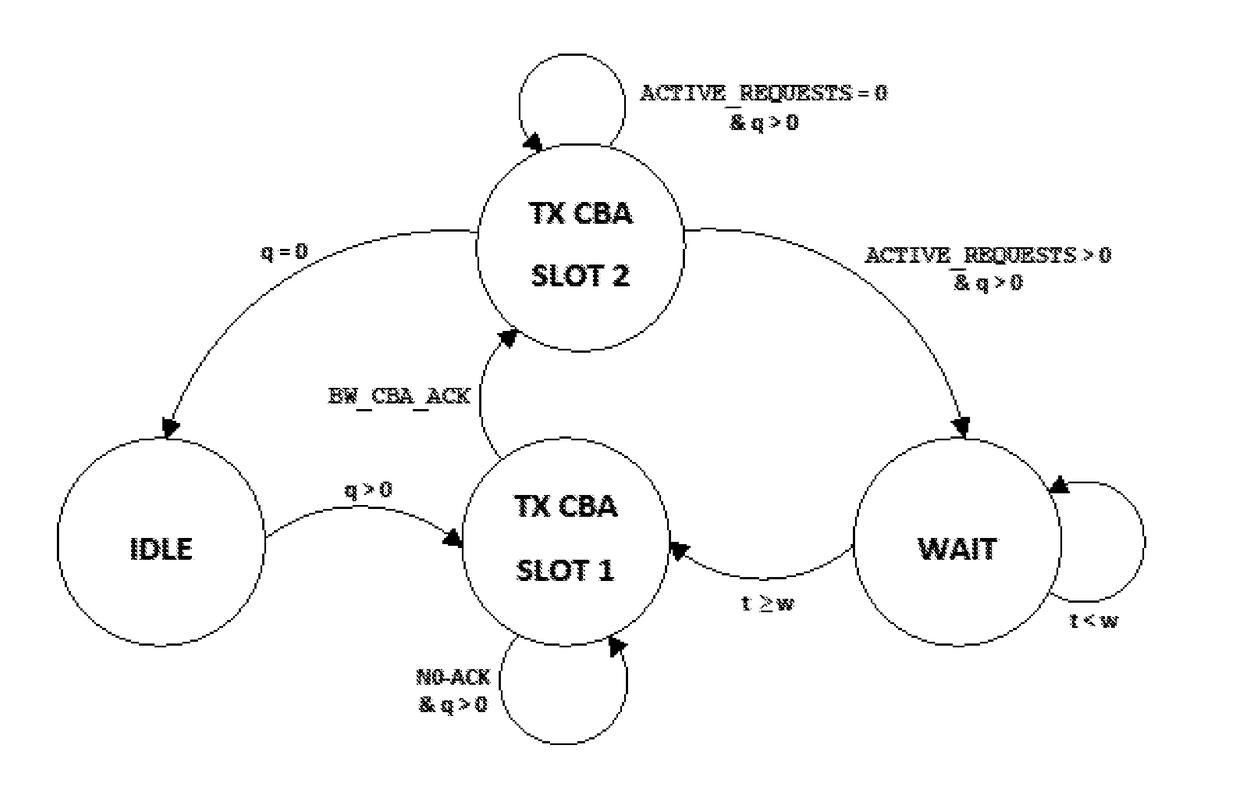Channel access and fairness protocol for contention-based-access networks with biased detection
a channel access and fairness technology, applied in the field of channel access and fairness protocol for contention-based-access networks with biased detection, can solve the problems of compromising the fairness of the network, increasing the network throughput, and affecting the detection accuracy of a set of mts, so as to achieve maximum network throughput and maintain bandwidth fairness
- Summary
- Abstract
- Description
- Claims
- Application Information
AI Technical Summary
Benefits of technology
Problems solved by technology
Method used
Image
Examples
Embodiment Construction
[0010]Uplink channel access protocol is used by MTs to initiate data transmission and transfer control information to the BS. Fairness of transmission amongst the MTs and Quality of Service (QoS) depends on the parameters used by the channel access mechanism at the link and physical layer. To site an example of current technologies that employ channel access procedures, User Equipments (UEs) in LTE use 1 of 64 Random Access Channel (RACH) preambles to initiate channel access. If two UEs pick the same RACH preamble, there is collision at the eNodeB, while if they pick unique RACH preambles, they can then be decoded even if the preambles are sent concurrently, thus reducing the probability of collisions. For systems where the same preamble is used for the UEs, or when the number of UEs is extremely larger than the available preambles, the problem of fairness is exacerbated.
[0011]The medium access control technique of IEEE 802.11 is the Distribution Coordination Function (DCF), which i...
PUM
 Login to View More
Login to View More Abstract
Description
Claims
Application Information
 Login to View More
Login to View More - R&D
- Intellectual Property
- Life Sciences
- Materials
- Tech Scout
- Unparalleled Data Quality
- Higher Quality Content
- 60% Fewer Hallucinations
Browse by: Latest US Patents, China's latest patents, Technical Efficacy Thesaurus, Application Domain, Technology Topic, Popular Technical Reports.
© 2025 PatSnap. All rights reserved.Legal|Privacy policy|Modern Slavery Act Transparency Statement|Sitemap|About US| Contact US: help@patsnap.com



